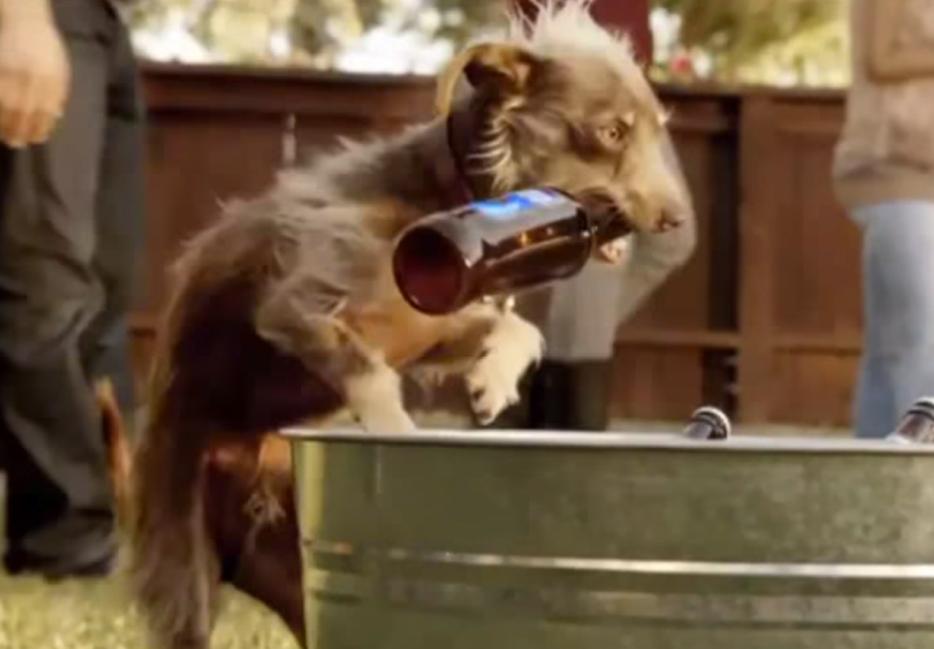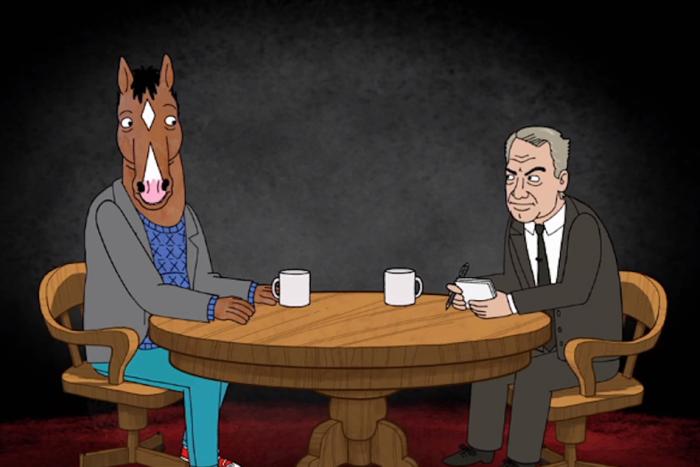In a Super Bowl commercial from 2012, an adorably shabby rescue dog is trained to retrieve Bud Lights on command. He brings his owner a beer. Then he drags over a couple of cold ones for the owner’s friends. Some pretty girls arrive, and the dog is sent to the fridge to beer them, too. At the end the dog does a keg roll, adorably. Everyone enjoys a Bud Light. Scene.
Ask me how I feel about the ad and I might say that it’s kind of weird to celebrate the enslavement of a rescue dog—should pets be forced to become our bartenders?—and then maybe I’d add something sniffy about light beer drinkers. But my brain would tell the truth. And the truth, according to a soon-to-be-published study in Nature Communications, is that my neurological reaction is likely the same as everyone else’s—a clear sign that the ad is bound for glory.
In the study, researchers at City College of New York in partnership with Georgia Tech tracked the brainwaves of just 16 people as they watched television, using the data to accurately predict the tastes of enormous audiences. The idea is to find the moments when the various viewers’ brain activity syncs up. Watch something boring, and everyone reacts in their own unique way. Watch something engaging, however, and it turns out we march in mental lockstep.
The study is basically a high-tech, vaguely disturbing update on the focus group, long the preferred method for figuring out whether something will be a hit. From the preferences of a representative few, extrapolate the tastes of the many. The well-documented problem with focus groups and test screenings, however, is that our responses aren’t reliable. We lie to researchers and we lie to ourselves, fooling ourselves into believing we love Foreign Dramas with Ambiguous, Unerotic Endings when our Netflix histories say otherwise.
In recent years, the creepy turn is to bypass conscious responses altogether and tap into the brain directly. There have been numerous studies that have peeked into the brain to see whether particular areas start heating up when we see something entertaining. What’s interesting about this new research, however, is that scientists aren’t looking for any particular portion of the brain or trying to suss out exactly how different areas interact upon seeing something interesting. They’re just looking to see if viewers’ brains responded in unison.
In the study, researchers took sixteen volunteers and had them watch the pilot episode of The Walking Dead, AMC’s hit zombie show. They recorded viewer’s brain waves using electroencephalography (EEG) throughout the episode, and then charted the moments when the brain activity matched up. Next, they compared that data to two inexact measures of popularity: the volume of Walking Dead tweets during each moment of the original broadcast and the show’s minute-by-minute Nielsen ratings. According to the researchers, “neural reliability explains 43% of the variance in viewership size during programming.” At the moments when people’s brains were responding in sync, there were likely more tweets and more viewers.
When the researchers used the same process on a variety of Super Bowl commercials, the results were even stronger. The researchers charted brain activity during a number of Super Bowl ads and compared it to the results of a Facebook-USA Today poll that ranked the same ads. This time, the brain data was able to predict the popularity of an ad with 90 percent accuracy. Most interestingly, brain activity predicted mass popularity far more accurately than simply asking the viewers which commercial they liked better. People may have loved the Bud Light ad, but you could only tell by looking inside their skulls.
(The worst ranked commercial in the poll, incidentally, was also the ad that showed the most varied brain activity: an extended celebration of Subway spokesman Jared Fogle’s journey from overweight person to svelte sandwich hawker. People hated that in all sorts of ways.)
The depressing endgame here, of course, is a future in which groups of people are strapped into chairs, outfitted with electrodes, and forced to listen to prospective Katy Perry hooks and watch Seth Rogen alternate takes. The process of finding a massive hit has always meant ignoring the divisive, smoothing over anything that might provoke a varied response, and pushing to create something that people respond to uniformly. This process may simply make that easier.






